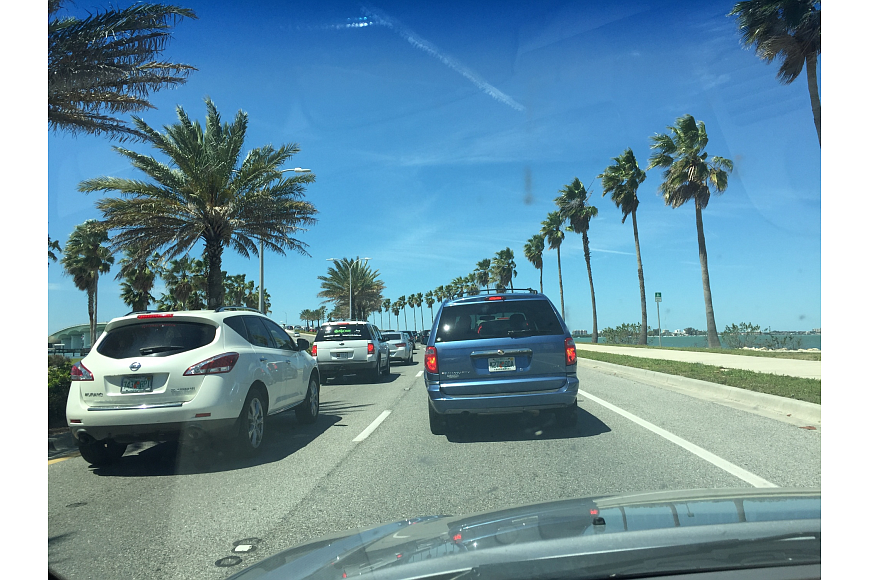- April 17, 2024
-
-
Loading

Loading

Could extra travel lanes on the John Ringling Causeway address long-standing traffic issues affecting travel to and from Sarasota’s barrier islands?
That’s a question city staff is interested in exploring further, though officials aren’t suggesting a traditional road-widening project. Instead, staff wants to consider the possibility of adding a dedicated lane for buses and low-speed vehicles traveling between St. Armands Circle, Lido Key and Longboat Key.
The concept is one of three short-term traffic solutions the city is slated to discuss at Monday’s City Commission meeting. The other two potential changes are more minor, outlined in the Florida Department of Transportation’s barrier island traffic
study. Staff will ask the commission whether it wants to add all three projects to the city’s list of priorities for Sarasota/Manatee Metropolitan Planning Organization funding.
One proposal would add high-visibility backplates to the traffic signal at John Ringling Boulevard and Bird Key Drive, designed to draw more attention to the stoplight. Another would increase the capacity for the westbound turn lane at John Ringling Parkway and Ken Thompson Parkway, near City Island and Longboat Key.
The city is behind the push for a bus and low-speed vehicle lane, which highlights staff’s focus on increasing the multimodal transportation options in Sarasota.
Colleen McGue, the city’s chief transportation planner, said staff was interested in the possibility of creating a new transportation option for people traveling from the mainland to the barrier islands.
McGue pointed to the on-demand i-Ride downtown circulator, a private venture that received a $338,000 city subsidy for its first two years of operation, as a possible model to emulate. That service uses low-speed electric vehicles to get around the city, though those cars are not allowed to travel on roads with speed limits of 40 mph or greater.
“We’ve had such success with the i-Ride service in downtown Sarasota,” McGue said. “If we were able to create a way for an i-Ride-type vehicle to get out to St. Armands Circle and Lido Key, to serve that part of the city, that would help get some people out of their cars.”
If the city were to use the same vehicles for transportation onto the barrier islands, it would have to get FDOT to lower the speed limit along the John Ringling Causeway to 35 mph. McGue said lowering the speed limit might sound like a counterintuitive solution for improving traffic, but she thinks removing cars from the road would more than make up for the decreased speed.
“For people who are stuck in the congestion coming onto the island or getting off of the island, they’re usually not going 40 mph,” McGue said.
If the commission decides it wants to pursue the extra lanes, there are more steps that must be taken before the city can actually implement any changes. Because the John Ringling Causeway is a state road, FDOT must approve any plans for redesigning the roadway. McGue said city staff has already begun discussing the topic with state officials.
Obtaining funding through the MPO isn’t guaranteed. And if the city wanted to start a new transit service, that needs to be paid for, too. If the concept ever becomes reality, McGue said it could take years. Still, city staff believes it’s an option that merits serious consideration.
“As staff, we’re trying to be proactive,” McGue said.